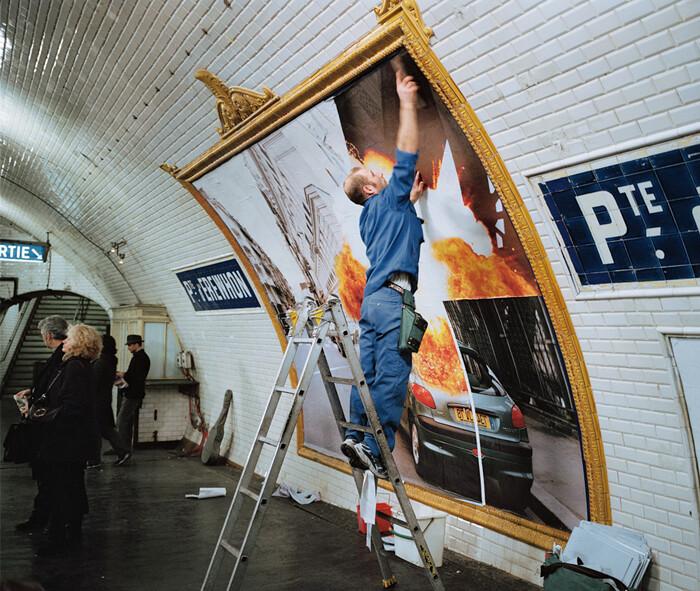In an untitled text from 2005, the artist collective Claire Fontaine drew a distinction from the shopworn idea of distributed, democratic power, claiming, “Now power explicitly exhibits all the violence it needs to conserve itself” and, thus, implicitly excluding the participation of society’s many constituents. Left to suffer a slow digestion in “the stomach of Capital,” such subjects habituate a type of political impotence that Fontaine, as a readymade artist, critically chooses “as both the means and subject of her work.” This impotence “is neither a disease to be eradicated nor a state of things that disqualifies us ethically,” the collective writes, leaving open to question the shape such ethics could take, and of the contribution of art to this field of activity.
The five other artists participating in “A Vernacular of Violence,” the ambitious group exhibition currently on view at New York’s Invisible-Exports, could be seen to share the collective’s supposition that violence — as empirical event and potential valence — has all but saturated contemporary parlance. Eric Baudelaire’s video Sugar Water (2006), for example, combines the aesthetics of urban terrorism and commercial advertising in delineating the contours of the post-9/11 era. Over the course of a single, seventy-two minute shot, set in a Parisian Métro station called “Pte. Erewhon” (an anagram for “nowhere” borrowed from the eponymous Samuel Butler novel), a professional billposter pastes four sequential images of a car exploding, one on top of the next, in a single billboard frame. As the images slip from photo-journalism to digital spectacle, from connoting the 2005 French riots to a metaphoric nowhere, the commuters themselves prove unstable as well, conferring conventional inattention to the billposter’s activities and, at other moments, revisiting the scene of the platform — in defiance of narrative logic — as erratic characters in the video’s traumatic structure.
A comparable methodology underpins what Walid Raad/The Atlas Group calls “hysterical documents,” the designation alone suggesting an inquiry directed less towards historiogaphical than psychological modes of remembering the Lebanese Civil Wars of 1975-1991. The “fantasies erected from the material of collective memories,” is how Raad characterized the war(s) in an interview with Alan Gilbert. Hostage: The Bachar Tapes (English Version) (2000/2002), two of fifty-three videos created by Souheil Bachar with assistance from The Atlas Group, recounts Bachar’s period of captivity, with five American men, during the arms-for-hostages negotiations between the United States, Israel, and Iran. “Each man experiences captivity in his own way,” Bachar says, in justification of the five books since published by the respective captives. By way of explaining the perplexing contributions from some of the authors’ wives, among other things, Bachar’s own account gives a libidinal and allegorical dimension to the power dynamics at play in this fraught outgrowth of international relations.
Rita Sobral Campos possesses Raad’s gift at spinning a postmodern yarn, and traces of Borges and Samuel Delany recur throughout “the headless plot” series (2010-). In three C-prints that resemble negative-images of diagrammatic blueprints, Sobral Campos mock-reports on the futuristic terrorism of a “recently discovered underground state” (including the synecdochical severings of the heads of statues across the continent), contributing a fantastical dimension to this timely, nuanced exhibition.



